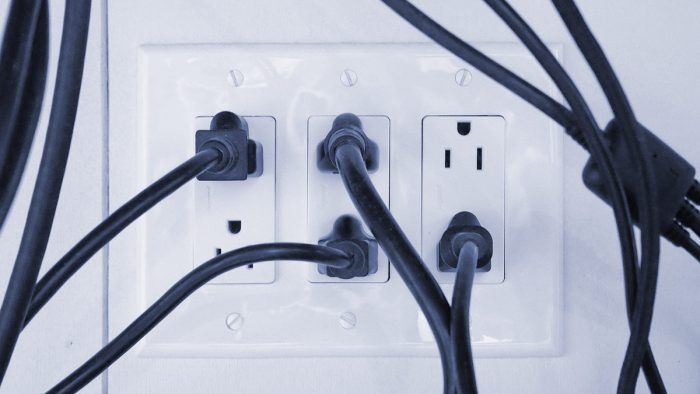How Many Outlets Per Circuit?
The rule of thumb in the field is based on commercial occupancies, and the real code requirements may surprise you.

On a recent remodel project, the electrician installed all the outlets for two large bedrooms and a hallway on the same circuit. Combined, there are 14 outlets on one circuit. He said it was fine, but it seems like too many to me. If all lighting is separate, how many outlets are allowed per circuit?
—Tom Bendy via email
Electrical consultant John Williamson replies: Surprisingly, there is no limitation on how many duplex receptacle outlets can be installed on a residential general-purpose branch circuit. Installing 14 duplex receptacle outlets on one branch circuit that serves two large bedrooms and a hallway is permitted by code. While it’s not necessarily “best practice,” keep in mind that there is a lot of load diversity in a home, with most lighting outlets and receptacle outlets used intermittently and for short periods of time. So, it’s highly unlikely that there would ever be enough devices in use at the same time to trip the circuit breaker.
In commercial occupancies such as an office building, each duplex receptacle is assigned a load value of 1.5 amp. This load value is used for calculating the size of feeders and services that supply electricity for the building. Without getting into all of the complexities and exceptions that apply to commercial settings in the National Electrical Code (NEC), a typical 15-amp, 120v branch circuit can supply up to 10 receptacle outlets (15 / 1.5 = 10). The same math applies to 20-amp circuits, which are more common in commercial applications: 20 / 1.5 = 13.33. In this situation, the electrical designer would round down to 13 receptacle outlets per 20-amp branch circuit.
Many residential electricians in the field use the rule of thumb that mimics the commercial method by assigning each duplex receptacle a load value of 1.5 amp, which is about what a 72-in. TV uses. Again, that’s 10 outlets per 15-amp general-purpose branch circuit. According to your specific scenario, 14 duplex receptacles would be four too many. However, in residential occupancies, the NEC is more concerned with the minimum quantity of general-purpose branch circuits in a home, not how many individual receptacle outlets there are. The minimum number of general-purpose circuits required is based on a home’s total square footage. To find this number (according to the 2020 NEC), take the calculated floor area of the home and multiply it by 3 volt-amps (VA). For example, a home with a floor area of 2000 sq. ft. would require four general-purpose branch circuits:
- 2000 sq. ft. x 3 VA = 6000 VA
- 6000 VA / 120v = 50 amp
- 50 amp / 15-amp circuits = 3.33 branch circuits (round up to 4 branch circuits)
Having only four general-purpose 15-amp branch circuits in a 2000-sq.-ft. home might not seem adequate, but keep in mind that the NEC is just a minimum standard with a focus on safety. It does not necessarily require you to plan ahead for better efficiency, more convenience, and future expansion, but you certainly can.
From Fine Homebuilding #312
RELATED STORIES





